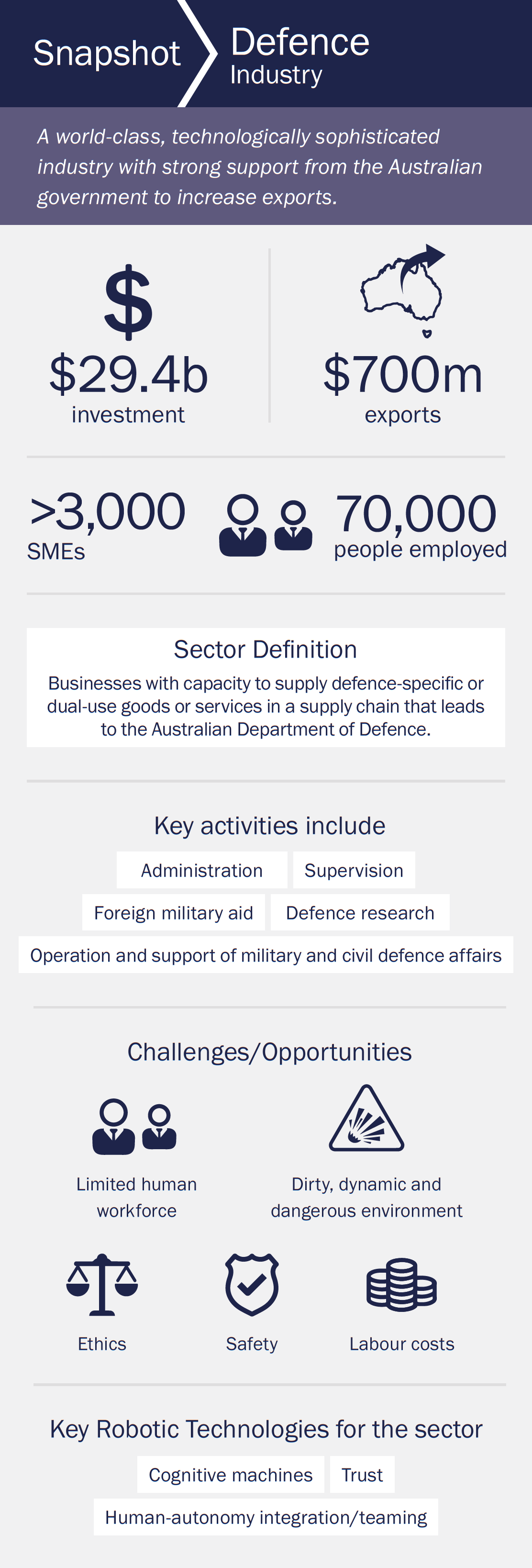
Strategic importance of robotics to national security
Protecting Australia requires coordination between the military, civil federal, state, and local security agencies, and private contractors. These entities are responsible for protecting and deterring incidents, mitigating injuries and loss of life to themselves and civilians, and minimising property damage. Robotics can help military, intelligence, police and emergency service personnel achieve these goals.
The Australian Defence Force (ADF) and the defence industry generally, refer to robotic systems as unmanned systems. This term applies to all forms of military, border patrol, national security and emergency response robots that keep humans out of harm’s way. Unmanned systems offer tremendous versatility, persistent functionality, the capacity to reduce the risk to human life, and an ability to provide contributing functionality across all key defence areas. These systems provide an increasingly valuable means of conducting a wide range of operations in uncertain, unstructured, and degraded environments. The ADF are now moving towards deployment of trusted autonomous systems (see Case Studies on p. 124 & 125).
Military operations are conducive to using unmanned systems, as are missions and applications shared with national security services. Examples include chemical, biological, radiological, and nuclear (CBRN) detection, counter-improvised explosive device (C-IED) actions, precision strike, and humanitarian assistance. While the largest number of deployed unmanned systems are in the defence forces, these systems are increasingly appearing in other emergency services environments, particularly disaster response (see Chapter 10 – Environment).
It is difficult to quantify the potential lives that may be saved by deploying unmanned systems in place of having defence personnel placed in high-risk situations. Every ADF deployment consideration made by government considers the human cost as well as the financial cost. Unmanned and autonomous systems allow the ADF to continue to operate in environments that have become increasingly lethal to defence personnel and widen future response options. For example, scouting robots (aerial and ground) mean that Army soldiers do not have to venture, uninformed, into unknown territory. This reduces the chance of their being engaged or injured.
Over the next decade from 2017–18, the $AU200 billion Integrated Investment Program demonstrates the government’s commitment to creating a more potent and capable ADF by growing a local defence industry that will create jobs and drive economic growth. In the 2016 Defence White Paper, the government announced it would invest $AU1.6 billion in the defence industry and innovation programs over ten years. All three elements of this investment, the Centre for Defence Industry Capability, the Defence Innovation Hub, and the Next Generation Technologies Fund, are now operational.

